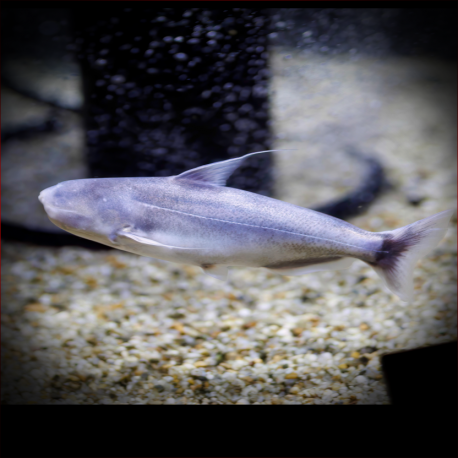More info
Datasheet
| Minimum Tank Size | 255 litres / 67.36 US gallons |
| Maximum Size | 26.5cm / 10.43inches |
| Temperature | 22°C / 71.60°F - 26°C / 78.80°F |
| Hardness | 2-15ºdH |
| pH | 6.0-7.4 |
General Description
The Blue Whale Catfish, scientifically known as Cetopsis Coecutiens, is an uncommon but fascinating oddball species sought after by aquarists looking for unique specimens. Characterized by its voracious feeding behavior and unique adaptations such as tiny eyes and slimy skin, this catfish is capable of inflicting a harmful bite and should be handled with caution during tank maintenance.
Aquarium Setup
When setting up an aquarium for the Blue Whale Catfish, it is essential to prioritize water movement over specific decorations. The catfish thrives in environments with a significant degree of flow, making the positioning of the filter return crucial for maintaining proper oxygen levels. Dim lighting is preferred to mimic the murky waters it inhabits, promoting the catfish's activity levels in the aquarium.
Behaviour
Typically best kept alone, the Blue Whale Catfish displays aggressive behavior towards tankmates, even consuming smaller fish and attacking larger ones by tearing flesh. While some success has been observed in group settings where conspecifics are less likely to be seen as food sources, caution is advised due to its predatory nature.
Feeding and Diet
Feeding the Blue Whale Catfish should consist of a meaty diet comprising frozen and live foods such as prawns, mussels, cockles, lancefish, and earthworms. This species is known for its voracious appetite, often accepting dried foods as well. Care must be taken not to overfeed, as they are prone to excessive eating.
Reproduction & Dimorphism
The reproductive behavior of the Blue Whale Catfish remains unknown, with no successful breeding recorded in captivity. Sexual dimorphism is noticeable in this species, with females exhibiting a fuller body than males, who develop a pointed dorsal fin as they mature.
Habitat and Distribution
In the wild, the Blue Whale Catfish predominantly inhabits large, flowing rivers within the Amazon, Tocantins, and Orinoco River basins across Venezuela, Colombia, Ecuador, Peru, Brazil, and Bolivia. This species thrives in open water habitats and demonstrates a keen sense of smell to locate weakened or distressed prey.

